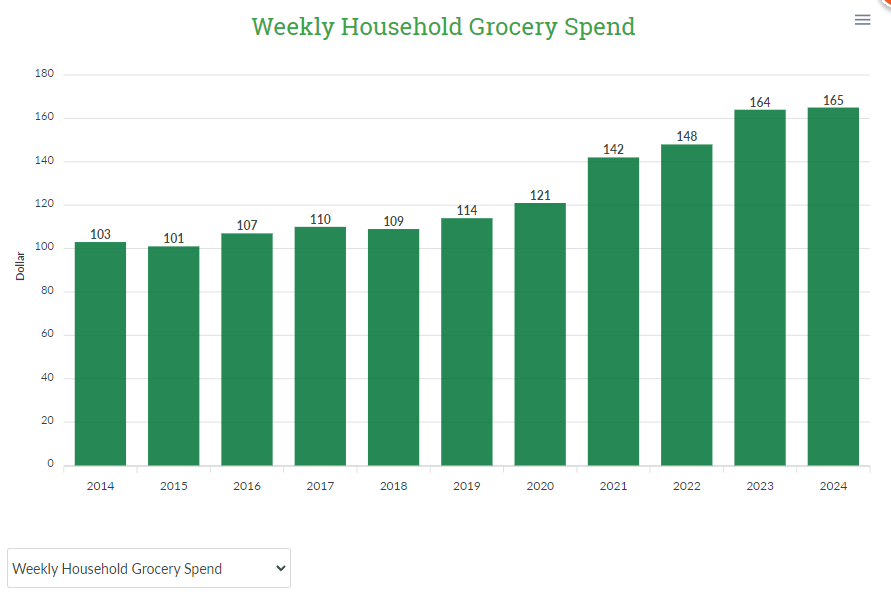Consumers find ways to control grocery budgets through strategic shopping and adapting to changing economic and environmental conditions, as inflation shows signs of easing.
Consumers are increasingly adjusting their grocery shopping strategies in response to economic pressures and evolving environmental factors, aiming for greater flexibility as they prepare for the fall. According to the latest findings from the 2024 U.S. Grocery Shopper Trends report, conducted by FMI – The Food Industry Association in partnership with The Hartman Group, grocery shoppers are managing their spending by prioritizing deals and exploring different stores and brands to control their expenses.

The report reveals that despite ongoing concerns about inflation, particularly in food prices, 83% of U.S. consumers feel they maintain at least some control over their grocery budgets. This sense of control is largely attributed to consumers’ ability to shop strategically, taking advantage of promotions and discounts to mitigate the impact of rising costs.
Encouragingly, the U.S. Department of Agriculture (USDA) reports that food inflation is subsiding, with midyear data showing that inflation for most food categories dropped below historical averages in 2024. Additionally, the USDA forecasts only a modest 1% increase in food-at-home prices for the remainder of the year, with projections for 2025 showing a further decline to an anticipated 0.7% increase.

Leslie G. Sarasin, President and CEO of FMI, noted, “Shoppers report that one of the few parts of their household budgets they can control is their grocery spending and that through taking advantage of deals, promotions, or shopping around, they continue to find value.” Sarasin emphasized that despite the ongoing concerns about rising prices, consumers still enjoy grocery shopping and appreciate finding good value, a trend expected to persist as inflation pressures ease.
The survey also highlights that 79% of grocery shoppers prioritize getting “good value” as their primary concern when shopping, which has led to a stabilization in average weekly household grocery spending. Over the past 18 months, spending has remained steady at an average of $163 per week. Meanwhile, 63% of shoppers are actively seeking deals and modifying their shopping behaviors by switching between different stores, products, and brands to better manage their grocery expenses.

Environmental factors have also played a significant role in shaping grocery shopping habits this year. The report points out that extreme weather events, including widespread heat waves this summer, have influenced consumers’ purchasing decisions. Many families increased their grocery spending during this period, stocking up on essential items in anticipation of potential shortages or challenges posed by the severe weather.

Additional insights from FMI’s U.S. Grocery Shopper Trends 2024 report show that consumers rate their primary grocery store highly, with an average score of 8.0 out of 10 in terms of meeting their needs. Notably, 65% of shoppers acknowledged the impact of higher-than-normal temperatures this summer, though only 9% linked these conditions to food shortages. However, concerns about food inflation remain prevalent, with 69% of consumers expressing that they are very or extremely worried about retail food prices.
This study is part of a broader five-part series designed to monitor and analyze ongoing trends in the grocery sector throughout 2024. The full report, U.S. Grocery Shopper Trends 2024: Return to Routine, is available through FMI for members of the media and industry professionals seeking a comprehensive understanding of these developments.
FMI continues to play a pivotal role in uniting various stakeholders across the food supply chain to enhance efficiency, safety, and overall consumer satisfaction. By bringing together retailers, producers, and service providers, FMI helps strengthen the industry’s ability to meet the changing needs of today’s shoppers while navigating an evolving economic landscape.
For more information and related resources, the full report can be accessed at www.FMI.org/GroceryTrends, where interested parties can explore additional data and insights from this series.




















